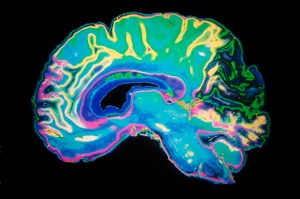The question of whether emotions are mental, physical or both has occupied the minds of scientists and philosophers for centuries. As early as 300 B.C.E. the Stoics believed that emotions were products of rational thought and therefore subject to reason. The late 19th century psychologists Carl Jung and William James argued that emotions are generated by our response to external stimuli until Walter Cannon, a student at James, postulated that emotions originate in the hypothalamus of the brain which then alters the body by means of neuronal connections and glandular secretions. Then experiments performed by Wilder Penfield in Canada in the 1920s revealed that stimulating certain areas of the brain produced emotional responses. These areas became known as the limbic brain which has to do with thought control and emotional experience.
In the past 40 years, there has been an explosion of science in the field of psycho-neuro-immunology (PNI), proving the connectivity of the body, brain, and mind. Based on the work of Dr. Candace Pert, we know that the immune system communicates directly with the nervous system via neuropeptides.
In 1972, Dr. Candace Pert discovered the opiate receptor. The opiate receptor is a molecules on the surface of all of our cells. When opiate and receptor molecules bind together, transferring information into the cell through the receptors, the cells respond by experiencing bliss.
Dr. Pert found that the opiate receptors, densely concentrated in the limbic brain (the hippocampus and the amygdala), also occur in every other part of the body. The implication is that emotions are not generated by the brain – but by the cells themselves. Since these receptor-bearing cells reside all over our bodies, all emotional experience also occurs in the blood, organs, muscles, tissue, and bones at the same time as they are registered in the brain.
Endorphins are only one of the substances capable of altering our moods at the cellular level. It is part of a larger group of chemicals known as neuropeptides. These naturally occurring molecules are produced inside cells and released into the surrounding fluids. Every cell in your body is studded with hundreds of thousands of receptor molecules programmed to attract and bind with a particular peptide. Because of their crucial role in guiding our body responses to external cues, these peptides have been called informational substances.
From a neurobiological standpoint, the immune system is considered a sensory processing system that is experiencing a “systems error” in the case of autoimmune disease. It turns out that we can guide this system by flooding the system with the right inputs that increase the flow of feel-good neurotransmitters which are part of this larger family of neuropeptides. We can even intend to cultivate good feelings like happiness, gratitude, joy, and peace of mind for immune regulation.




